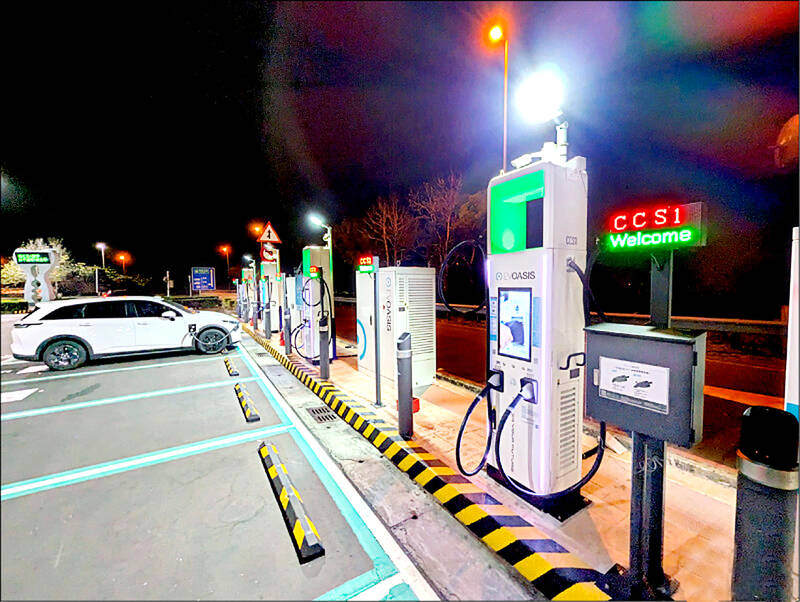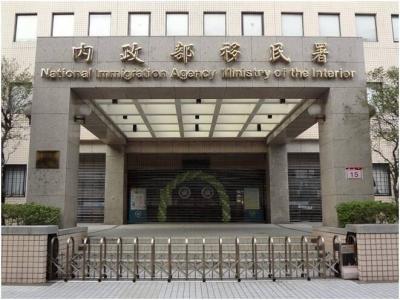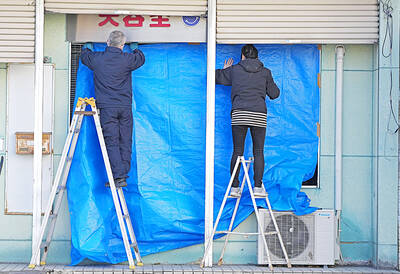A proposed amendment to the Highway Act (公路法) could mean that electric vehicle (EV) owners would have to start paying fuel use fees as early as 2030, the Highway Bureau said on Monday.
Most motor vehicle owners are obligated to pay fuel use fees, which are mainly used to pay for road maintenance and construction expenses, but EV owners are exempt due to the government’s 2050 net zero carbon emissions plan.
Lawmakers, including Democratic Progressive Party (DPP) legislators Lin Chun-hsien (林俊憲) and Lee Kun-tse (李昆澤), told a meeting of the Transportation Committee at the legislature in Taipei that to avoid a funding shortfall of about NT$3.6 billion (US$118.21 million) by 2030, when Taiwan is expected to have about 2.91 million EVs, articles 27, 28 and 75 of the act should be amended.

Photo: Wu Liang-yi, Taipei Times
EV use had grown to about 884,000 in March from about 196,000 in 2018, Lee said.
The purpose of collecting the fuel use fee is to maintain, repair, construct and manage highways, the lawmakers said.
“As EV use increases, owners should pay fees in accordance with the principle of user pays,” they said. “As such, the name of the fee should be changed from ‘fuel use fee’ to ‘road use maintenance and management fee.’”
The government needs to ensure that there is adequate funding to maintain and repair roads, so fees should be levied from all road users, Lee said.
The Ministry of Transportation and Communications agreed that the name of the fee should be changed, suggesting: “Road maintenance, construction and safety administration fee” (公路養護修建及安全管理費).
The Institute of Transportation is reviewing the rules for the fuel use fees, Deputy Minister of Transportation and Communications Chen Yen-po (陳彥伯) said.
“The institute is expected to finish its review by next year and EV owners are likely to begin paying road maintenance fees by 2030,” Chen said.

A small number of Taiwanese this year lost their citizenship rights after traveling in China and obtaining a one-time Chinese passport to cross the border into Russia, a source said today. The people signed up through Chinese travel agencies for tours of neighboring Russia with companies claiming they could obtain Russian visas and fast-track border clearance, the source said on condition of anonymity. The travelers were actually issued one-time-use Chinese passports, they said. Taiwanese are prohibited from holding a Chinese passport or household registration. If found to have a Chinese ID, they may lose their resident status under Article 9-1

Taiwanese were praised for their composure after a video filmed by Taiwanese tourists capturing the moment a magnitude 7.5 earthquake struck Japan’s Aomori Prefecture went viral on social media. The video shows a hotel room shaking violently amid Monday’s quake, with objects falling to the ground. Two Taiwanese began filming with their mobile phones, while two others held the sides of a TV to prevent it from falling. When the shaking stopped, the pair calmly took down the TV and laid it flat on a tatami mat, the video shows. The video also captured the group talking about the safety of their companions bathing

A classified Pentagon-produced, multiyear assessment — the Overmatch brief — highlighted unreported Chinese capabilities to destroy US military assets and identified US supply chain choke points, painting a disturbing picture of waning US military might, a New York Times editorial published on Monday said. US Secretary of Defense Pete Hegseth’s comments in November last year that “we lose every time” in Pentagon-conducted war games pitting the US against China further highlighted the uncertainty about the US’ capability to intervene in the event of a Chinese invasion of Taiwan. “It shows the Pentagon’s overreliance on expensive, vulnerable weapons as adversaries field cheap, technologically

Starting on Jan. 1, YouBike riders must have insurance to use the service, and a six-month trial of NT$5 coupons under certain conditions would be implemented to balance bike shortages, a joint statement from transportation departments across Taipei, New Taipei City and Taoyuan announced yesterday. The rental bike system operator said that coupons would be offered to riders to rent bikes from full stations, for riders who take out an electric-assisted bike from a full station, and for riders who return a bike to an empty station. All riders with YouBike accounts are automatically eligible for the program, and each membership account